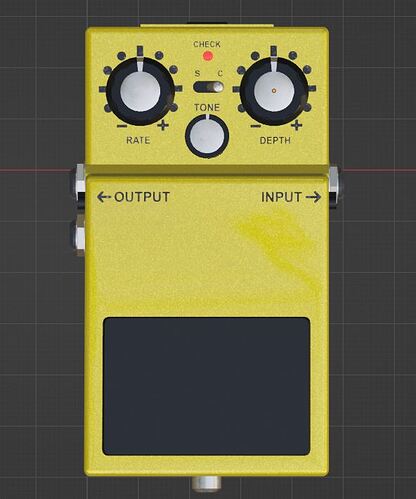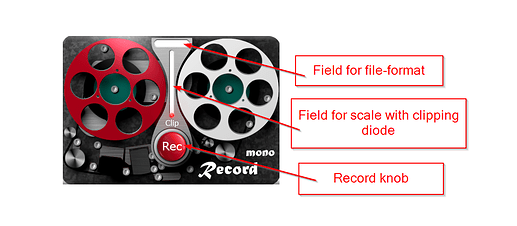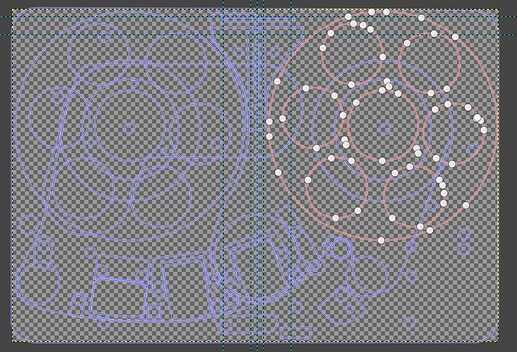There is a small issue with this knob, when used on the dark background of the CollisionDrive, the upper left side has a hairy outbreak which looks a bit strange:

@brummer ah, ok. This is the disadvantage that I could not test it. It is refinable. Just a moment. But the rest is fine? Is it in both stages or only in the switched on?
@brummer This is the visible edge of the hole in the housing where the button is located. If it bothers you, I can remove it
Nice! Thanks a lot. 
So here it is with the new Gate button (and blue coloured Fonts.
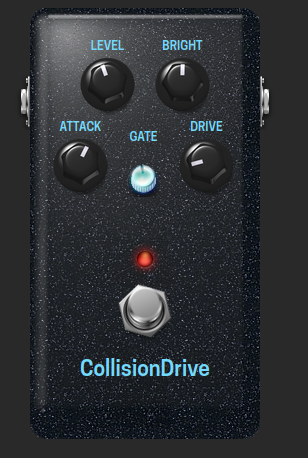
Now I need to upload it and send a pull request to the mod-plugin-builder.
Cool! Looks absolutely fine!  …and very coherent and balanced…
…and very coherent and balanced…
@James In my company we have a training department where new 3D modelers are trained. We simply set a stompbox as the training target in order not to generate any costs for this and to have a direct outcome. You can see the result here. This is a screenshot taken in Blender (not a rendering!).
The whole modelling can also be parameterized, so that you can draw different formats of the stompbox from one file just by changing some parameters. It is also possible to build different buttons and different types of stompboxes. The downside is that they become pixel graphics.
I’m getting a Blender training file uploaded and will make it available later. You guys can take a look at it at your leisure.
This is pretty cool indeed! It looks pretty similar to a boss pedal. I think it would be nice though to make something in the boss style but more tailored towards on screen use rather than real world use. For example, the pedal takes up roughly 60-70 percent of the usable area because in the real world, you need the leverage to press down on the button, but on a computer it only needs a click, so this section could be made much smaller to give more space for knobs. I think if the proportions were adjusted so the switch takes up less space, it could still be recognisable as a boss style pedal while also being more useable in a GUI environment
I would also be interested to see some renders. For our use case, the IO jacks aren’t needed
@James I agree completely. This stompbox has been modelled according to some photos of a Boss stompbox. My company is specialized in copying real exisitng assets that is why this approach has been the most simple one for us. I agree, this must be tweaked now.
Nevertheless you will find the Blender-file here. May you can play around with it to get an idea if this could be a manageable way to create Plugins artwork. As allready mentioned: Renders are Pixel-graphics, this should be in your mind.
I like every place this thread has been up to now.
I’m fascinated by the creative ping-pong to unite the old with the new.
I hope there is a lot of inspiration to be scavenged for the MOD them when working on that “interface” layer of their infrastructure.
I love the idea of compontents that are wireframed for modern, digital use but with the identity of the hardware wel all known, unting as much of the pro arguments already made in this thread.
Haha yes I know. As mentioned, I made every product render and animation of the MOD devices and I’m well aware they are pixel based
It’s definitely a manageable way of doing it and I’ve actually been advocating for this for the last 2 years. I even mentioned it near the beginning of this thread
For me, vector art is a more broader available and simpler option. We can post Inkscape templates that people can easily edit with nice graphics and colours to quickly make new GUIs. These GUIs are also nice and responsive and they can look really nice. This should especially be used for plugins that don’t replicate a real world device. In that case vectors are preferred because a vector graphic made now can be used into the future even if people start using 16k monitors, they will still render at full resolution. With pixel graphics we will always need a higher resolution image
For the best looking GUIs though I think realistic 3D renders are the way to go and yes I know that they are bitmaps (pixel images). If it were not for the problem of resources, I would be all in on this. The file size of these bitmaps is a real disadvantage that I would like to see if we can overcome.
The best idea I have currently to tackle this problem is to convert the images to WEBP format. This is a web picture format developed by google that has much smaller file sizes than JPEGs and PNGs. I’m not sure if we can already support these file types or not @falkTX maybe you can enlighten me? I know that in the past, some browsers did not support the format (safari for example) I’m not sure if that is still the case
We often create that file-format, for us this is no problem and indeed, it is a cool one because it’s small file-size and supporting transparency. I am not sure if Blender is already supporting it, but Gimp does. I know that some guys of the Blender community at least are working on that support.
Yeah it’s also not a problem if it isn’t supported in blender since we can just convert it to a webp at any point, I’m more concerned about if the MOD GUI can support it and if the browsers people use to open the web GUI support it
We just did some tests in the office and were able to replace a plugin GUI image with a webp one on the safari browser and it displayed correctly so that’s promising (edge, chrome and firefox already had support for it). Unless @falkTX has an issue with it I would say it would make sense moving forward to make all pixel image GUI elements as webp format to reduce file size. Perhaps we can even find a way to convert all the existing PNGs to webp. This could help with the responsiveness issue people have been experiencing on mobile devices connected wirelessly
This can be even batched. Fully automized. You can create a Gimp job for that.
@James sh… I forgot to upload the renders of the Chickenhead knob with linear movement. I finished it some days ago already. It can be downloaded here.
Yes that part should be pretty managable but actually replacing them all on the platform might be a bit tricky
@brummer
It took a bit longer because I had too much work last week. But here is my proposal for the Record mono and stereo. It must be a bit polished still…
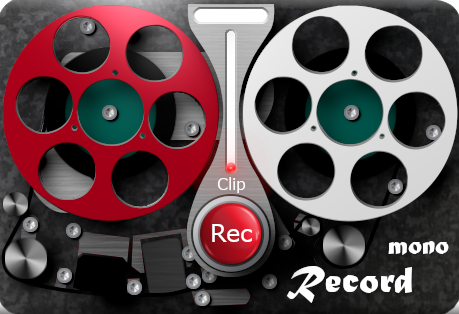
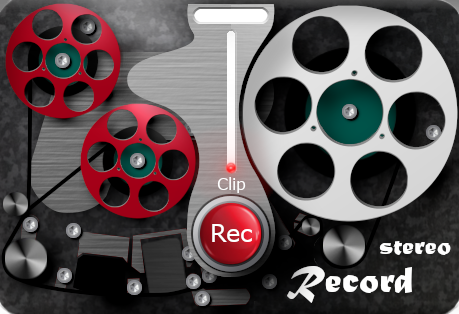
I found a method how to save all shapes in Gimp in paths. These paths can be easily imported to InkScape for further editing. I now could easily create a vectorized version of this as well.
That looks familiar. Is it based on the Nagra SN?
wow! You recognized it! Yes, indeed! It is based on Nagra SN. But it is 100% painted. No photo included. And it is a bit different.
